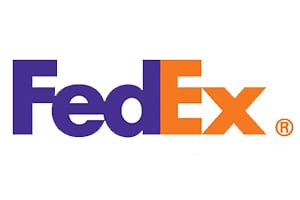 FedEx today reported first-quarter revenue and earnings that beat analyst expectations, while announcing plans for more than 50,000 seasonal hires to deal with holiday shipping volumes, compared with 20,000 announced in 2013. The company ended up hiring twice that many to handle greater-than-expected demand.
FedEx today reported first-quarter revenue and earnings that beat analyst expectations, while announcing plans for more than 50,000 seasonal hires to deal with holiday shipping volumes, compared with 20,000 announced in 2013. The company ended up hiring twice that many to handle greater-than-expected demand.
FedEx’ Q1 revenue increased 6% to $11.7 billion, while Thompson Reuters’s consensus forecast had called for $11.45 billion. FedEx’ net income was $606 million or $2.10 per share, compared to estimates of $1.96 per share.
Mike Glenn, president and CEO of FedEx Services, told analysts on an earnings call that the company has been working with retail and e-tail customers all year in order to determine peak volume and demand “plan our operations accordingly.”
“We expect more than 50,000 seasonal positions to be added for the upcoming peak across the FedEx operating companies,” said Glenn. “This includes package handler, helpers, drivers and other support positions. Based upon our growth expectations and network expansion, the majority of those seasonal workers will have the opportunity to continue working for us after the holiday season.”
FedEx executive vice president and CFO Alan Graf said 85% to 90% of the company’s $1.2 billion in capital expenditures for fiscal 2015 would be spent on expanding holiday peak capacity. “We are right on plan in terms of our plans to bring those new facilities on,” Graf said. “And I think as we said in the past, we manage roughly 150 real estate projects a year in anticipation of peak.”
FedEx Chairman Fred Smith also addressed numerous media reports last year that maligned FedEx – along with UPS – for contributing to late holiday deliveries and the ensuring backlash against carriers and retailers.
“There are just scores of things that are done at each of the FedEx operating companies to accommodate a smooth peak season,” Smith. “Contrary to some of the popular press, we actually had an outstanding peak season last year, with the exception of a couple of weather events.”
Asked if FedEx’ 2015 averaging pricing increase of 4.9% announced on Tuesday was in reaction to rate cuts and parcel strategy changes by the U.S. Post Office, Graf said the decision was made independent of any competitive moves.
“We don’t comment on specific pricing actions by our competitors,” Graf said. “We make all of our pricing decisions independently, based upon market conditions and economic conditions.”
Asked about the financial impact of FedEx’ change to dimensional weight, along with its rate increases, Graf said it would be difficult to say.
“We’re working with customers right now to alter their packaging so that they have more efficient packaging, which is good for sustainability and certainly fits with our corporate social responsibility programs,” he said. “Let me remind you we announced that change six months early to give customers plenty of time to respond to that, and many are taking advantage of our packaging lab to redesign packaging to be more efficient, which we like.”
Rob Martinez, president and CEO of parcel consulting and auditing firm Shipware, said he believed FedEx plans to raise the average price for its Express service by 4.9% in 2015 – instead of 3.9% as in recent years – to help the unit reach its goal of double-digit profit margins like its ground and freight units.
FedEx began restructuring and rationalizing the Express unit in 2012, including giving buyouts to about 3,600 employees, overhauling its air fleet and buying more fuel efficient planes. Through these and other moves, FedEx is projecting a $1.6 billion profit improvement in the unit by 2016.
“The operating margin for Express was up 5.4% in the quarter, while ground was up 18.4% and freight up by 10.4%,” Martinez said. “Clearly Express is trailing, so they’re trying to shore up the gap by raising rates higher than they have.”
